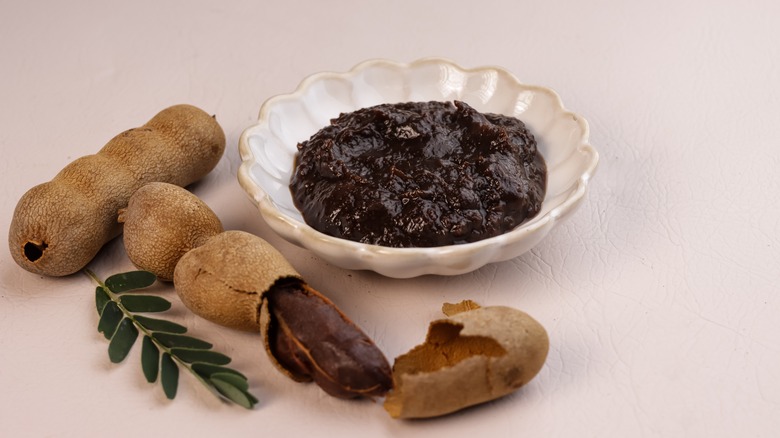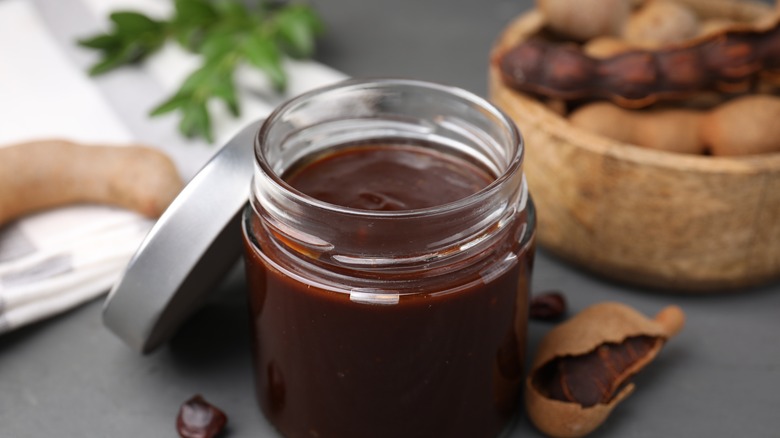How To Substitute Tamarind Paste With Ingredients You Already Have On Hand
One important skill to learn as a chef is knowing how to substitute ingredients. It takes knowledge and experience to know what flavors, textures, and functions work in place of another. Some substitutions are more obvious, like using lime in place of lemon juice, but others involve a bit more creativity. One ingredient that can be challenging to obtain — but can be replaced with kitchen staples — is tamarind paste.
Used in Mexico, India, the Caribbean, and throughout Asia, tamarind paste is made from the pulp of a pod from the tamarind tree. The paste is dark, sticky, sweet, and sour, with notes of citrus and smokiness. The sweet and sour flavor lends itself perfectly to many Asian dishes, including pad Thai, stir-fries, and curry. It's not easy to find in the standard U.S. supermarket, and Asian and international grocery stores are your best bet. Replacing the ingredient is sometimes necessary if it's difficult to find.
If replacing tamarind paste for the acidic and sweet flavor, the most simple substitute is a ratio of one part lime juice and one part brown sugar. This is flexible; other citrus juice or even vinegar can be used instead, whereas coconut sugar also works well for the sugar component. To better mimic the texture, lemon juice can be blended into a paste with a dried fruit like apricot or prune, and used as a 1:1 replacement. A similar substitution is an orange marmalade or a thick fruit jam mixed with citrus juice.
Considerations for substituing tamarind paste
When a recipe calls for a small amount of tamarind paste, say a few tablespoons, the sugar and citrus juice mixture works just fine. These recipes likely use tamarind paste as the special ingredient to tie together the best pad Thai, or to lend a sweet and sour flavor to soups and other noodle dishes. The sugar and citrus mixture will be thin and watery, but the consistency doesn't matter so much in these recipes.
The replacement for tamarind paste becomes a bit tricker for recipes like glazes, candies, cocktails, sauces, and some desserts. In these instances, tamarind paste is being used for both its flavor and thick texture, making the dried fruit or jam and citrus juice paste the ideal replacement. Go for dried fruits or jams with sweet and tart flavors, such as apricot, plum, or cherry. If you do attempt to use sugar and citrus juice for something like a glaze or sauce, another ingredient will be needed to supply the thick texture. Consider molasses instead of sugar, or cooking the lime and sugar down with applesauce.
In the case of cocktails, the dried fruit paste may be a bit too thick and possibly chunky — instead consider using something like pomegranate molasses in place of tamarind, which you can buy at a Middle Eastern grocery store. Pomegranate molasses is used in Middle Eastern cuisine and has sweet and tart components like tamarind paste. It has a thinner consistency and is therefore easily incorporated into beverages.

